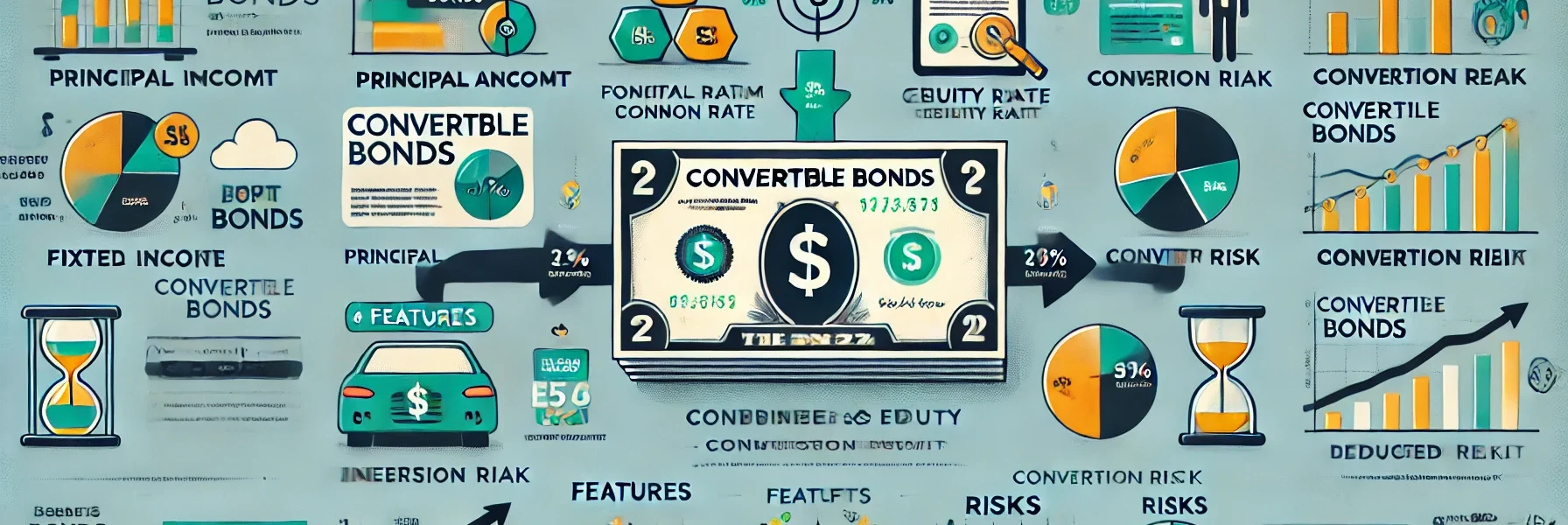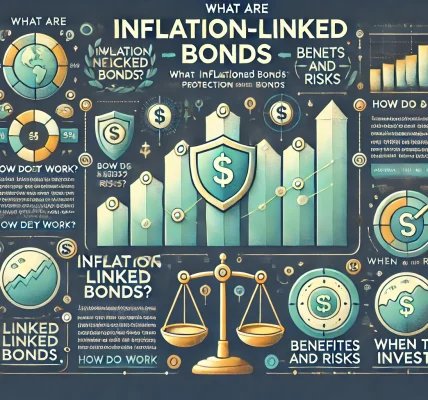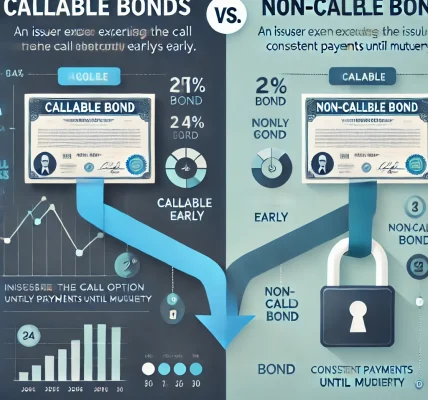Convertible bonds are a unique financial instrument that merges the features of traditional bonds with the potential equity upside of stocks. For investors seeking both steady income and capital appreciation, convertible bonds offer a compelling hybrid option. This comprehensive guide will break down what convertible bonds are, how they work, their advantages and risks, and how they fit into an investment strategy.
What Are Convertible Bonds?
A convertible bond is a type of corporate bond that gives the bondholder the option to convert their bonds into a specified number of shares of the issuing company’s stock. This feature allows investors to benefit from the security of fixed-income payments while retaining the opportunity to participate in the company’s equity growth.
Key Characteristics of Convertible Bonds:
- Principal Amount: The amount the issuer promises to repay at maturity.
- Coupon Rate: The fixed or floating interest rate paid periodically to the bondholder.
- Conversion Ratio: The number of shares a bondholder receives upon conversion.
- Conversion Price: The price at which the bond can be converted into shares.
- Maturity Date: The date when the bond must be repaid if not converted.
How Do Convertible Bonds Work?
When an investor buys a convertible bond, they receive regular interest payments (typically semi-annually) until the bond’s maturity. At any time before or at maturity (depending on the bond’s terms), the bondholder can choose to convert the bond into shares of the issuing company’s stock.
For example, suppose you own a convertible bond with a conversion ratio of 50. If the issuing company’s stock price exceeds the conversion price, converting the bond may provide a higher return than holding the bond to maturity.
Types of Convertible Bonds
Convertible bonds come in several varieties, each offering distinct features and benefits:
1. Vanilla Convertible Bonds
These are the most common type, allowing bondholders to convert their bonds into a predetermined number of shares at a fixed price.
2. Mandatory Convertible Bonds
These bonds require conversion into equity at a specific time and price, typically offering a higher coupon rate to compensate for the mandatory conversion.
3. Reverse Convertible Bonds
In this structure, the issuer retains the option to convert the bond into equity if the share price reaches a predetermined level.
4. Contingent Convertible Bonds (CoCos)
Primarily issued by financial institutions, these bonds convert into equity only if specific financial or regulatory conditions are met.
Benefits of Investing in Convertible Bonds
Convertible bonds offer several advantages to investors, blending the stability of debt with the growth potential of equity:
1. Fixed-Income Security
Convertible bonds provide regular interest payments, offering a steady income stream and downside protection.
2. Equity Upside Potential
If the issuing company’s stock price rises significantly, bondholders can convert their bonds into shares, capturing capital appreciation.
3. Diversification
Including convertible bonds in a portfolio can diversify risk across fixed-income and equity markets.
4. Reduced Volatility
Compared to common stocks, convertible bonds are generally less volatile because of their fixed-income component.
5. Downside Protection
If the issuing company’s stock underperforms, investors still receive fixed coupon payments and their principal at maturity.
Risks of Convertible Bonds
While convertible bonds offer attractive features, they also carry specific risks that investors must understand:
1. Equity Market Risk
The value of convertible bonds can fluctuate with the issuing company’s stock price, exposing investors to market volatility.
2. Interest Rate Risk
Rising interest rates can lower the market value of convertible bonds, similar to traditional bonds.
3. Credit Risk
If the issuing company faces financial distress, there is a risk of default and non-payment.
4. Dilution Risk
When a company issues convertible bonds and bondholders convert them into shares, it may dilute the value of existing shares.
Evaluating Convertible Bonds: Key Metrics to Consider
When analyzing convertible bonds, consider the following important metrics:
1. Conversion Premium
The difference between the bond’s conversion price and the current stock price. A lower conversion premium makes conversion more attractive.
2. Yield to Maturity (YTM)
The total return anticipated if the bond is held until maturity, accounting for coupon payments and principal repayment.
3. Yield to Call (YTC)
Applicable if the bond is callable by the issuer before maturity. This measures the yield if the bond is redeemed early.
4. Parity Value
The value of the bond if converted into shares, calculated by multiplying the current share price by the conversion ratio.
How to Invest in Convertible Bonds
Investors can access convertible bonds through various channels:
1. Individual Bonds
Purchase convertible bonds directly through brokers during new issuances or in secondary markets.
2. Convertible Bond Funds
Mutual funds and Exchange-Traded Funds (ETFs) specializing in convertible bonds offer diversified exposure and professional management.
3. Private Placements
Institutional investors may access convertible bonds through private offerings, though these are less accessible to retail investors.
Tax Implications of Convertible Bonds
Convertible bonds are typically taxed in two ways:
- Interest Income: Coupon payments are taxed as ordinary income.
- Capital Gains: If the bond is converted and shares are sold, any gain on the equity may be subject to capital gains tax.
Investors should consult a tax professional for personalized advice based on their location and financial situation.
Are Convertible Bonds Right for You?
Convertible bonds can be an ideal investment for those seeking:
- Income and Growth: A combination of fixed-income security and equity appreciation potential.
- Risk Management: Reduced volatility compared to pure equities.
- Diversification: Exposure to both bond and stock markets.
However, they may not suit risk-averse investors who prioritize principal protection over market exposure.
Conclusion
Convertible bonds offer a unique investment opportunity by blending the stability of fixed income with the potential for equity growth. Understanding their structure, benefits, and risks can help investors make informed decisions. By carefully evaluating the issuing company’s financial health and market conditions, investors can leverage convertible bonds to achieve balanced and diversified portfolios while managing risk effectively.
As with any investment, conducting thorough research and consulting with financial advisors is recommended to align convertible bonds with your broader financial goals.




